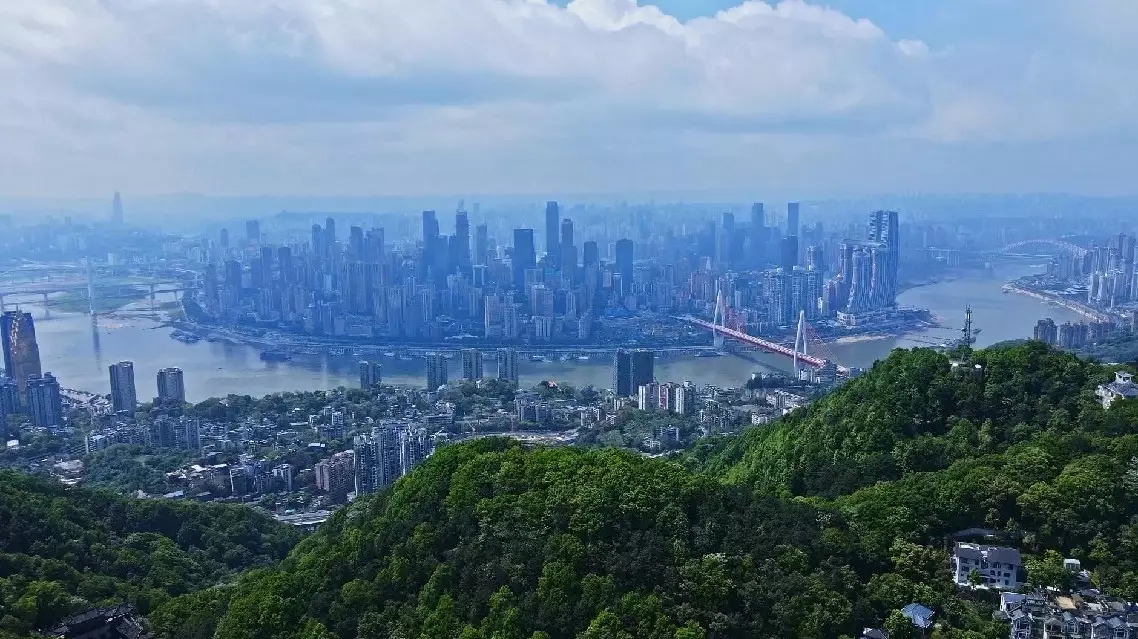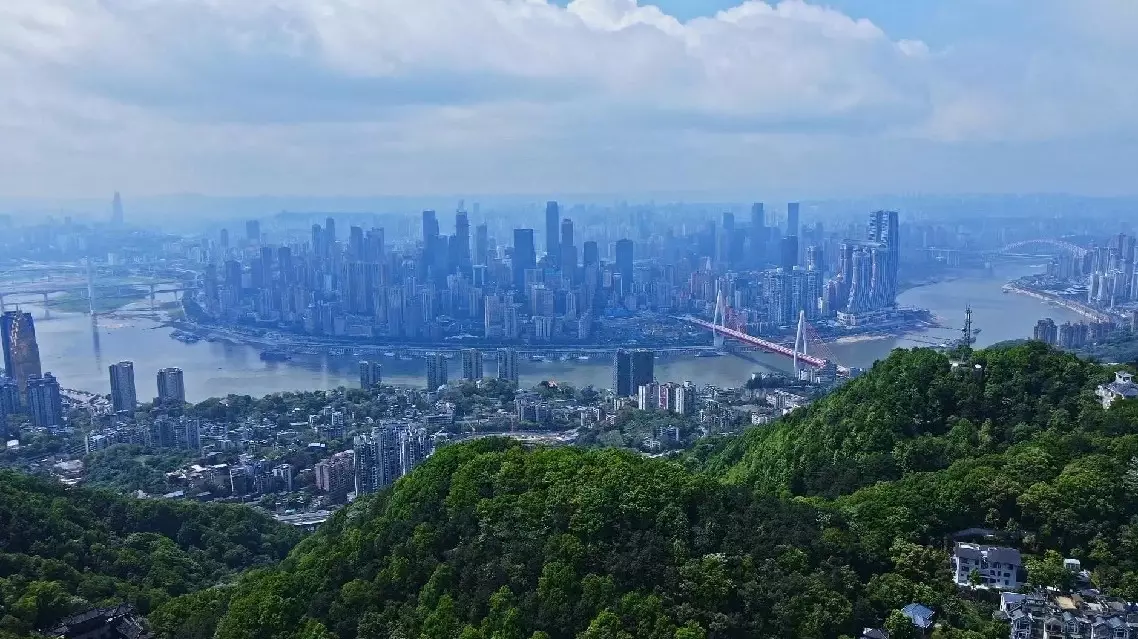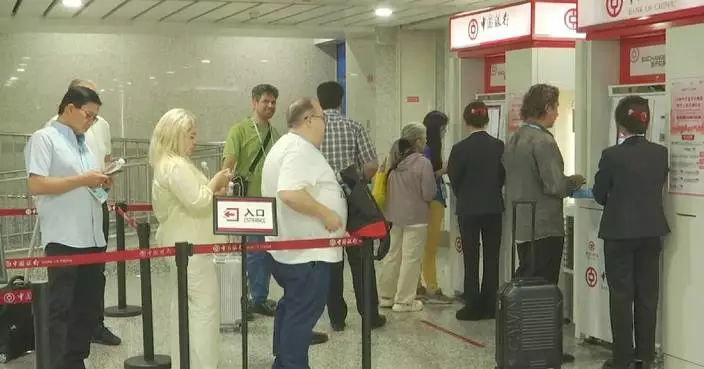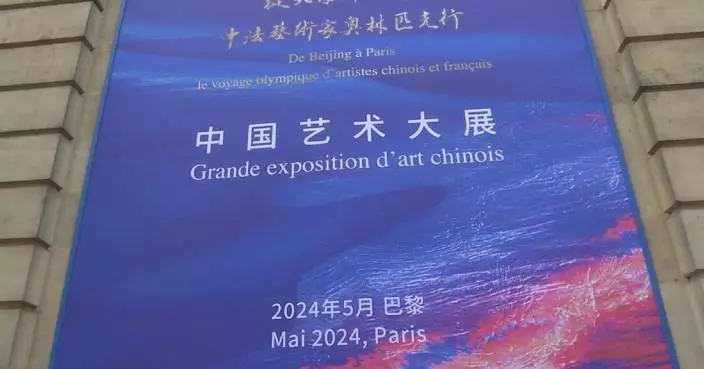China's western region, sprawling 6.87 million square kilometers and home to 382 million people, has emerged from the shadows of the country's more developed regions over the years.
The western region consists of six provinces (Sichuan, Guizhou, Yunnan, Shaanxi, Gansu and Qinghai), five autonomous regions (Tibet, Ningxia, Xinjiang, Inner Mongolia and Guangxi) and the municipality of Chongqing, covering over 70 percent of the country's land area and containing 27 percent of the total population. It has abundant renewable energy sources such as solar and wind energy, and various underground mineral resources such as rare earth, bauxite, coal and natural gas, which account for more than 70 percent of the country's total reserves.
However, due to various natural, historical and social factors, most of the western region had lagged far behind the rest of China and developed at a sluggish pace in the late 20th century. Since 2012, the Chinese government has decided to end the imbalance in east-west regional development. President Xi Jinping, also general secretary of the Communist Party of China (CPC) Central Committee, made more than 30 inspection tours to the western region.
Xi has special affinity with the rural areas in the western region, where he went to the village of Liangjiahe in northwest China's Shaanxi Province in 1969 and spent seven years there working and living with the local villagers. The region's widespread poverty and backwardness have since driven him to set goals in his later life to change the look and improve the people's wellbeing there.
"In the late 1960s, I worked as a farmer in a small village on the Loess Plateau. There I experienced firsthand the hardships in farming and saw how the local people struggled to make ends meet. Their longing for a better life has stayed in my mind ever since. One deep impression I got is that only through continuous development can the people's dream for a better life and social stability be realized," Xi said when addressing the High-level Dialogue on Global Development via video link in Beijing on June 24, 2022.
During an inspection tour in Shaanxi in February 2015, Xi visited the local people, including his old acquaintances, in Liangjiahe.
"My life started when I came to Liangjiahe. And even after I left, my heart remained here with all of you. At that time I said that I would do good things for the people," Xi said to the locals there.
Sitting among the locals of the Yi ethnic group during a February 2018 inspection tour in Sichuan, Xi emphasized the need to lift all people out of abject poverty, as he led the national campaign to rid the country of extremet poverty.
"No ethic group, household or people should be left out in our pursuit for a better life for the people," Xi said.
During his inspection tours in the western region in recent years, Xi has attached great importance to developing industries that leverage local strengths in the poverty relief efforts, such as the distinctive tea, black fungus, and ethnic embroidery industries in Shaanxi and Guizhou.
"We should grow tea to make the people rich and build a thriving industry," Xi said while visiting a tea plantation in Shaanxi's Pingli County during an inspection tour there in April 2020.
"Small black fungus can become a big industry," he said to black fungus growers in Shaanxi's Zhashui County during the same inspection tour.
"We should promote the Miao embroidery. As both a cultural item and an industry, it can make a contribution to rural vitalization," Xi said to artisans of the Yi ethic group in Guizhou's Bijie City during a February 2021 tour in the province.
Xi has also said that China's economy is transforming from high-speed to high-quality development, as laid out in the country's 14th Five-Year Plan (2021-2025) for national economic and social development, so every region should develop its economy based on its specific conditions and bring its comparative advantages into play.
"The 14th Five-Year Plan emphasizes high-quality development. It is the only path for us," Xi said to the staff of a machinery manufacturer in Liuzhou City during an April 2021 tour in Guangxi.
In March 2019, Xi chaired a meeting of the CPC Central Committee for deepening overall reform, which passed a guideline for advancing the development of the western region in the new era. Five years later, Xi again chaired a symposium on the region's development during his April 22-24 inspection tour in Chongqing, in which he put forth important instructions on promoting the western region's well-coordinated environmental conservation, greater openness and high-quality development.
At the symposium, Xi stressed that developing industries that leverage local strengths should be the main focus, and that efforts are needed to adopt a region-specific approach in nurturing emerging industries and expediting industrial transformation and upgrade in the western region
He noted that high-quality development must be supported by high-level protection to consolidate the national ecological security barrier.
He underlined efforts to boost large-scale development through large-scale opening-up and facilitate opening up of the western region to the domestic and international markets.
He highlighted the necessity of ensuring both development and security, and improving the security guarantee capacity in key areas such as energy and resources.
Xi noted the importance of integration between new-type urbanization and comprehensive rural revitalization, so as to ensure and improve people's wellbeing in the process of development.
He underscored that a strong sense of community for the Chinese nation should be forged to safeguard ethnic unity and stability in border areas.
After years of unremitting efforts, the average annual GDP growth of the western region reached 10.2 percent as of 2020, greatly closing the economic gap with other regions, data from the National Development and Reform Commission shows.
The region is also home to a network of trade routes between China and the rest of the world, reaching 490 ports in 120 countries and regions as of January this year, according to official data.

Xi charts course for high-quality development of China's western region

Xi charts course for high-quality development of China's western region










